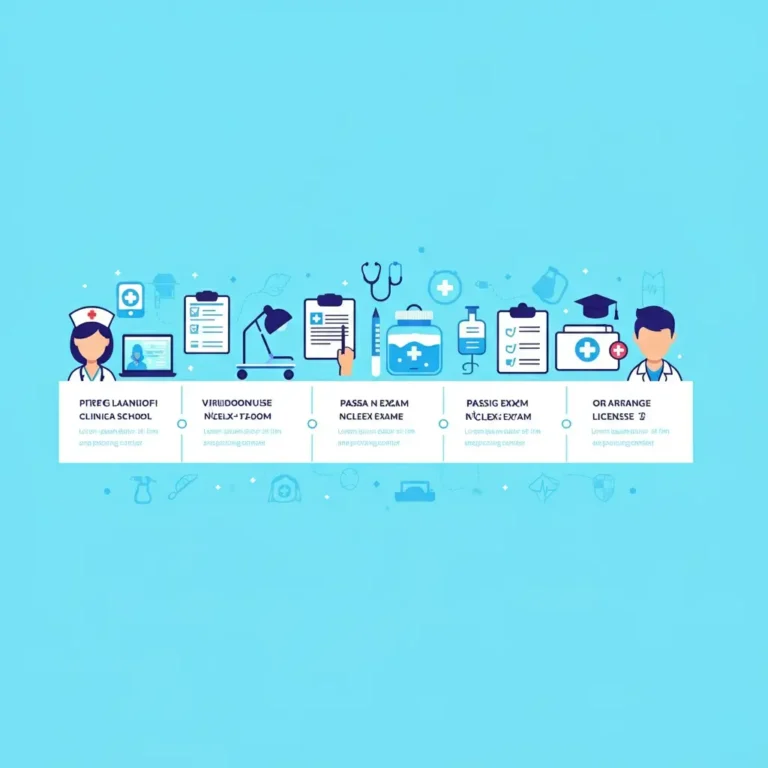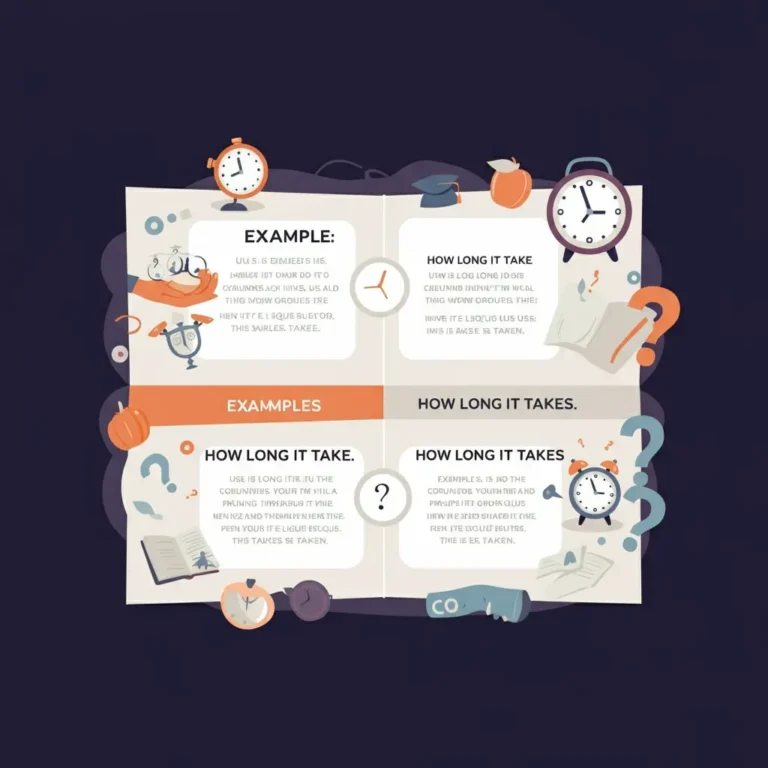How Long Does It Take to Get a Bachelor’s Degree?
Earning a bachelor’s degree is an important milestone for many people aiming to advance their education or jumpstart their careers. But how long does it actually take to complete this academic achievement? The answer varies depending on factors like the program type, institution, and circumstances. This guide dives deep into the time commitment required while offering insights to help you plan your academic journey effectively.
Below, you’ll find a full breakdown of what determines the timeline for earning a bachelor’s degree.
Table of Contents
1. Introduction to Bachelor’s Degrees
A bachelor’s degree is an undergraduate academic qualification awarded by colleges and universities upon successful completion of a program. Most bachelor’s programs require students to complete coursework in their chosen field, along with general education requirements like mathematics, sciences, and humanities. It’s widely considered the foundational degree for entering professional fields, graduate studies, or specialized careers.
2. Standard Timeframe for a Bachelor’s Degree
The Typical 4-Year Model
For most students in the U.S., earning a bachelor’s degree typically takes four years of full-time study. This timeframe is based on completing approximately 120 semester credit hours, which breaks down to 15 credits per semester over eight semesters (two semesters per academic year).
However, many people take longer than four years to complete their degree. According to recent studies, about 60% of students finish their bachelor’s within six years.
Variations in Other Educational Systems
If you’re studying outside the U.S., timelines may vary. For example:
- United Kingdom: Bachelor’s degrees (like B.A. or B.Sc.) often take three years.
- Australia and Canada: Generally, these follow the four-year model.
- Germany: Some bachelor’s programs can be completed in three years, depending on the course structure.
3. Factors That Influence Completion Time
The duration of your degree depends on several factors, including:
- Course Load: Full-time vs. part-time enrollment.
- Credit Hours: Number of credits completed each semester.
- Program Requirements: Some courses have additional requirements like internships or practicums.
- Transfer Credits: Applying credits from another institution to reduce overall requirements.
Personal factors, such as balancing work and family obligations, also play a role in determining how long it takes.
4. What Are Full-Time and Part-Time Study Options?
Full-Time Study
Full-time students generally register for at least 12-15 credit hours per semester. Following this pace helps ensure graduation within the standard four-year time frame. However, the intensity of full-time study can pose challenges for students juggling additional responsibilities.
Part-Time Study
Many people opt for part-time enrollment due to work or family commitments. While this allows for more flexibility, it extends the degree completion timeline considerably. Part-time students may take 6-9 years to finish.
5. Accelerated Bachelor’s Degree Programs
For those eager to finish their degree sooner, accelerated programs are an excellent option. These programs often:
- Condense the timeline to 2-3 years.
- Include shorter session lengths (e.g., 8-week terms instead of 16 weeks).
- Require year-round attendance, including summer breaks.
Students enrolling in accelerated options must be prepared for an intensive workload.
6. Online Programs and Their Impact on Timelines
Online degree programs have gained popularity for their flexibility, especially among working adults. Many allow students to complete coursework on their schedule. Depending on the program’s structure, online degrees can follow standard, part-time, or accelerated tracks.
Pros and Cons of Online Learning
- Pros: Flexible scheduling, no need for relocation, potential for quicker completion.
- Cons: Requires self-discipline and proactive communication with instructors.
7. Credit Transfers and Prior Learning Assessments
Transferring credits from previous college courses or earning credit through prior learning assessments (like CLEP or AP exams) can significantly shorten the time required for a bachelor’s degree. These options are beneficial for students returning to school after a break or switching institutions.
8. Challenges That May Delay Graduation
Many students face obstacles that can prolong their timeline. Key challenges include:
- Changing majors may require starting new prerequisite courses.
- Financial difficulties that limit the ability to enrol full-time.
- Failing or repeating courses can set back credit hour progress.
Planning and staying focused can help avoid these common pitfalls.
9. Tips for Staying on Track with Your Degree
- Create a Detailed Academic Plan: Work closely with an academic advisor to outline your courses.
- Stay Organized: Use scheduling apps or a calendar to track assignments and deadlines.
- Take Summer Classes: You can complete additional credits during the summer to graduate sooner.
- Set Goals: Break your degree into manageable milestones.
10. Popular Fields of Study and Typical Timeframes
Specific majors, like engineering or architecture, may take longer than four years due to additional credit or internship requirements. Fields like business or communication typically align closer to the four-year mark.
Examples:
- Engineering: Often includes additional lab work extending up to 5 years.
- Education: Frequently requires student-teaching internships, adding another semester.
11. Financial Planning for Your Degree Journey
Completing a bachelor’s degree is a financial commitment. Understanding tuition costs, living expenses, grants, and scholarships ahead of time plays a crucial role. Studying part-time can reduce immediate costs, but may raise the overall expense since the program extends longer.
12. Combining Work and Study
Many students work part-time to fund their education. Flexible coursework schedules, such as evening or weekend classes, serve as excellent options for working students. Balancing both requires strong time management skills.
13. How Different Countries Approach Bachelor’s Degrees
Global approaches to bachelor’s programs vary. Countries like Germany and Finland prioritize shorter timelines, while others combine bachelor’s and master’s programs into integrated “bridge” degrees.
14. Post-Degree Options and Paths to Consider
Once you’ve completed your bachelor’s degree, you can pursue a variety of options, such as:
- Entering the workforce directly.
- Enrolling in postgraduate programs (like an MBA or Master’s degree).
- Specializing through industry certifications to attain advanced knowledge.
Choosing a path depends on your goals and long-term career aspirations.
15. FAQs About Earning a Bachelor’s Degree
Can I complete my degree faster by taking extra courses?
Yes, enrolling in summer classes or increasing your credit hours per semester can accelerate your timeline.
Are online degrees credible?
Online degrees from accredited institutions are highly reputable and accepted by employers.
What if I need to take a break during my studies?
You can pause your studies and return, but this may delay your graduation. Students should consult their institution to ensure credits remain valid upon resumption.
Is part-time study worth it?
If you have work or family obligations, part-time study provides flexibility, though it may extend your timeline.
What exactly is a credit hour?
One credit hour roughly equals one hour of class time per week during a semester. Degrees require a minimum of 120 credit hours.
Earning a bachelor’s degree is a rewarding process that opens doors to numerous professional and personal opportunities. Understanding the timeline and factors involved can help you structure your educational path to fit your needs.







